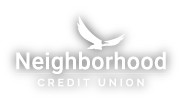Bursting The Consumer Debt Bubble
Published June 5, 2020
Most Americans hold some form of debt at one point in their life, and for many it’s still a taboo topic. Currently, the United States reached its highest record of consumer debt at $14.3 trillion. While just the topic of debt can be stressful, it’s important to understand what consumer debt is, the types of it, and how it is possible for you to pull yourself out of debt.

What is Consumer Debt?
Consumer debt can be defined as the amount owed by people like you and me, not the amounts owed by business or government. Your day-to-day average person carries consumer debt. It is the debt on purchased goods that are consumable and/or do not appreciate. The main examples of consumer debt are credit card debts, medical debts, and student loan debts. Another large portion of consumer debt is personal loans, cell phone bills, utility bills, bank overdraft charges, auto loans, and payday loans to name a few.
While multiple factors contribute to the fast-growing $14 trillion debt owed by consumers, the main culprits that are causing this number to quickly rise are home and auto loans, student loans, and credit cards.
Home Loans
A home loan, known as a mortgage, is a debt secured by the collateral of real estate property. The borrower then pays back the loan over a set amount of years, the most popular being a 15-year term or a 30-year term.
As of early May, mortgage balances rose $156 billion to $9.71 trillion with record-low interest rates. While this is a sign that our real estate market is growing, largely due to the Coronavirus pandemic, nearly 4.1 million homeowners have put a forbearance on their mortgage.
The average interest rate for US homeowners was a record low 3.31%, but as the coronavirus has made its way through the United States, it has made its mark by causing interest rates to drop below 3.31% for three straight weeks.
Auto Loans
An auto loan is used to purchase a vehicle. Like mortgages, an auto loan is paid off over a fixed amount of time with the vehicle itself held as collateral.
Auto loan debt reached a total of $1.2 trillion in January 2020 and make up 9.5% of US consumer debt. As auto loan rates drop in response to COVID-19, it will hopefully boost auto sales like it did in the 2008 recession.
Student Loans
Student loans are designated to help individuals pay off post-secondary education and the associated spending with it, such as fees, tuition, books and supplies, and living expenses.
The student loan crisis has taken over the United States by storm. This fast-growing burden for almost 45 million Americans is now at about $1.56 trillion. As the cost of education continues to rise, many are struggling for decades after to pay off loans.
Due to COVID-19, federal student loan borrowers have automatically been placed on an administrative forbearance. The suspension of payments will last until September 30, 2020, but you can still make payments if you choose. Read the borrower Q&As.
The student loan crisis has taken over the United States by storm. This fast-growing burden for almost 45 million Americans is now at about $1.56 trillion. As the cost of education continues to rise, many are struggling for decades after to pay off loans.
Due to COVID-19, federal student loan borrowers have automatically been placed on an administrative forbearance. The suspension of payments will last until September 30, 2020, but you can still make payments if you choose. Read the borrower Q&As.
Credit Card Debt
A credit card is a form of payment where charges are made against a line of credit rather than the user’s personal cash. It is issued by financial intuitions with the cardholder's promise to pay back the funds used, plus other agreed charges.
Credit card debt is meant to be paid off each month, yet often that does not happen. As of February 2020, credit card debt has surpassed $1 trillion with over 47% of Americans holding some amount of credit card debt with an average of $6,200. While other debts continue to rise, credit card debt has dropped significantly. The Federal Reserve concluded this debt recently decreased due lack of spending during COVID-19.
When picking out a credit card, it's important to choose one that best suits your needs. If you're wanting a credit card that will reward you, our Cash Rewards Credit Card* gives you 1.50% cash back on every purchase. If you're looking for a credit card that offers a great low rate or to transfer high interest balances without a fee, our Platinum Credit Card**
is currently offering a 0.0% intro rate for the first 6 months.
Revolving Consumer Credit vs Non-Revolving Consumer Credit
Revolving Consumer Credit
Credit and debit card debt is the most common type of revolving debt because it is meant to be paid off monthly. This is a great way for one to build credit if managed correctly. After approval, you can spend up to your given limit, pay down some or all of the balance, and immediately spend again. The main advantage of revolving debt is flexibility and the ability to be reused over and over.
Un-Revolving Consumer Credit
Un-revolving consumer credit differs from revolving consumer credit because once it’s paid off you cannot use it again. The best examples are auto and student loans, and non-revolving credit loans typically have lower interest rates than revolving credit loans because they are considered lower risk. After you have paid off your un-revolving credit account, the account is closed and cannot be used again.
Credit and debit card debt is the most common type of revolving debt because it is meant to be paid off monthly. This is a great way for one to build credit if managed correctly. After approval, you can spend up to your given limit, pay down some or all of the balance, and immediately spend again. The main advantage of revolving debt is flexibility and the ability to be reused over and over.
Un-Revolving Consumer Credit
Un-revolving consumer credit differs from revolving consumer credit because once it’s paid off you cannot use it again. The best examples are auto and student loans, and non-revolving credit loans typically have lower interest rates than revolving credit loans because they are considered lower risk. After you have paid off your un-revolving credit account, the account is closed and cannot be used again.
How to get Yourself out of Debt
Pulling yourself out of debt can seem like a taunting mission but with these few steps you’ll be able to see the light at the end of the tunnel.
- Pay more than the minimum payment.
- Paying more than your minimum balance will not only help you pay off your balance faster, but it will also reduce the amount of interest you’re charged. If you have a $5,000 credit card bill and you only pay the minimum payment of $114 a month, it will take more than 5 years and you will pay $2,292 in interest.** * If you take that same credit card bill and pay $300 a month, you will pay off the balance in 19 months and only pay $642 in interest. It is important to pay over the minimum payment, no matter how little the amount.
- Create a space where you can see your debts, bills, and income.
- This is the best way to know what you’re working with. If you’re paying off debt from multiple sources, it can be difficult to stay on top of where the money is going. Having an area where you can organize your total debt and income, such as an Excel or Google spreadsheet, will help you maintain your payment plan.
- Look into refinancing, balance transfers, or promotions to lower your interest rates.
- Shop around for loans that may offer a lower rate than what you are currently paying to see if refinancing will work for you.
- If your credit card rate is too high, you may qualify for a credit card that has a lower rate that's offering a balance transfer promo. You can also take a few minutes to call your credit card company and ask for a temporary lower interest rate to help you get ahead.
- Look for offers or promotions financial institutions might be running. They could hold an opportunity for you to save money or pay down loans faster.
- Create a Budget
- While working towards your goals to pay off your debts, limit yourself to unnecessary spending. Create a budget that works for your payment plan goals and stick with it until the debt is paid off. Easier said than done, but the self-discipline will be worth it!
Neighborhood Credit Union is dedicated to helping members reach their financial potential, no matter where they’re starting out. That’s why we offer free educational tools such as our EverFi calculators. Using these calculators, members can discover a monthly budget, best debt payoff plans, and so much more.
Assistant Programs at Neighborhood Credit Union
Neighborhood Credit Union is here to help those who are struggling with debt. If you’re wanting to pay off one loan faster than the other, you can opt into our skip a payment program on a qualifying loan*. This will allow you to put the extra payment towards another.
We also offer Money Management, a useful tool that allows you to manage your accounts, investments, car loans, mortgages, and much more with ease. With easy to view budget bubbles, you can see where your money goes each month.
We understand that several are feeling the weight of their debt during the pandemic and we want you to know that we’re here to help. We’re offering our skip a payment program with exceptions, mortgage loan assistance, a special personal loan, and other options that may work for you during this trying time.
Debt can be an uncomfortable topic, but it’s important to know that you’re not alone in your financial worries. Whether it’s finally paying off your car, house, or simply cutting down on your credit card debt, rest assured that it’s possible. Stick to your budget plan, search for refinancing opportunities and promotions, and utilize free financial planning tools to help eliminate your debt.
*APR based on creditworthiness. Rates are subject to change. APR will vary and will be calculated based on the Wall Street Journal Prime Rate and may go up to a maximum of 18.00%. Minimum payment is 2% of total new balance or $18.00, whichever is greater. Cash advance fee is $10 or 2.00% of the amount of each cash advance, whichever is greater. No balance transfer fees. Must be 21 years or older to apply. Additional limitations, terms and conditions may apply.
**APR = Annual Percentage Rate. Must be 21 years or older to apply. Introductory APR only applicable to new credit card applications. 0.00% Introductory APR for 6 months from issuance of the card. After the introductory period, APR will be adjusted based on creditworthiness. Rates are variable and subject to change and will be calculated based on the Wall Street Journal Prime Rate and may go up to a maximum of 18.00%. Minimum payment is 2% of total new balance or $18.00, whichever is greater. Cash advance fee is $10 or 2.00% of the amount of each cash advance, whichever is greater. No balance transfer fees. Additional limitations, terms and conditions may apply. Equal Opportunity Lender. View the Guide to Benefits (Opens in a new Window)(Opens in a new Window)and the Platinum Credit Card Disclosure(Opens in a new Window)(Opens in a new Window).
***Based off an average calculated interest

Skyler has been a Marketing Content Specialist at Neighborhood Credit Union since 2019.

